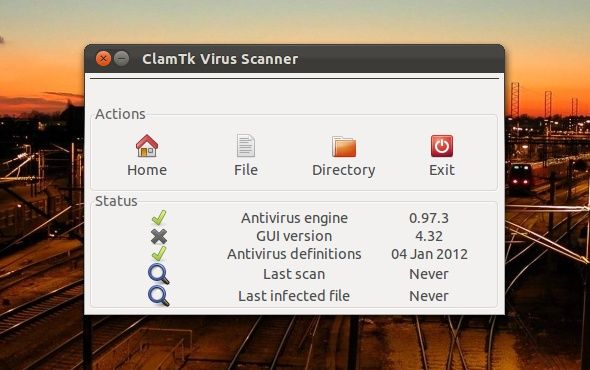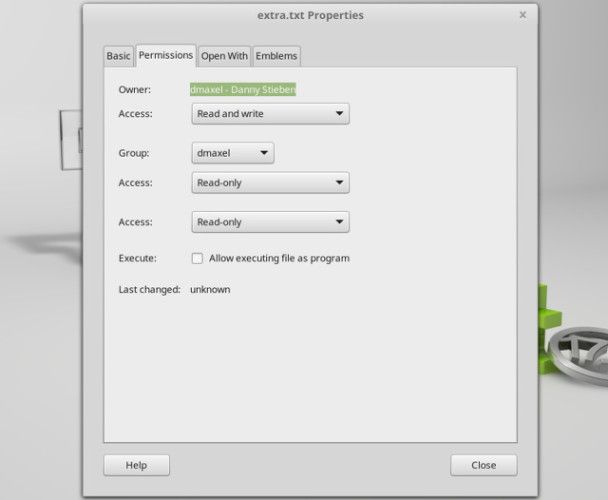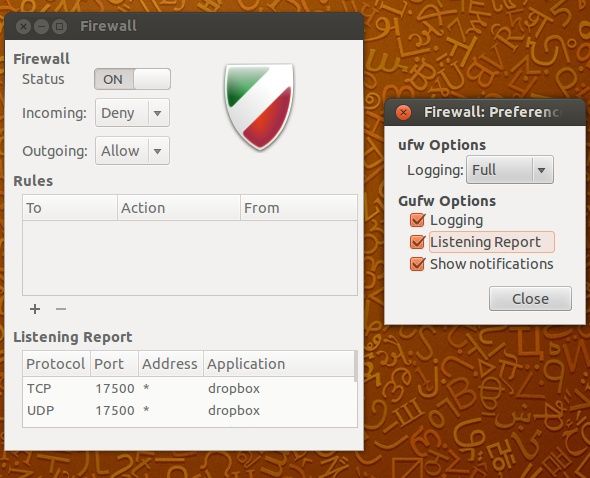Security is an important topic on everyone’s minds in today’s
highly-technological world. With all of the security news that pops up
on almost a daily basis, trying to be aware of the choices you make can
make a big difference. Linux is often touted as the most secure
operating system you can get your hands onto, but is this reputation
deserved?
Let’s take a look at different aspects of Linux security.
While this is an extremely rare occurrence, it does show that attackers are targeting Linux and that such exploits are possible. Keeping track of the latest security news is very important, whatever platform you’re using.
However, the fact that the list is longer than zero items proves that Linux isn’t impenetrable. The fact that the list is relatively short is thanks to a few different factors, including:

Now, although the risk of Linux viruses wreaking havoc is low, there are antivirus clients (such as Clam Antivirus) you can get for Linux. The twist is that these are mainly used to scan for Windows viruses. The idea is that as data passes through your Linux system, it can be scanned for viruses so that it does not infect other Windows users who might be receiving that data at some point. Consider it a public service.

If malware does ever run, it’ll most likely run with your user’s permissions, so the damage will be localized but it won’t take down your whole system. Why? The system-related files are owned by the “root” user. This is the reason why it’s recommended to use the root account (or sudo) as little as possible to avoid the risk of running malware as root. Because if that happens, it’ll definitely wipe out your whole system (if the malware was written to do so).

Having a firewall is still extremely important, however. Linux is no different than the other operating systems when it comes to networking — without software to control the ports, anything from the outside world can connect to your computer and start causing mayhem. As a desktop user, the quickest and easiest tool to make sure that you have a firewall enabled is Gufw, a graphical tool for the UFW firewall. It’s a very simple thing you can do to protect yourself from attacks.
What all do you do to secure your Linux system? Let us know in the comments!
Image Credits:penguin carrying a rifle by 3Dalia via Shutterstock
Explore more about: Computer Security, Malware, Online Security.
Let’s take a look at different aspects of Linux security.
Security Practices of Distribution Maintainers
For a short period of time in February 2016, some links on Linux Mint’s download page redirected to an altered installation image that contained a backdoor. Since then, Linux Mint’s maintainers have gone under attack for bad security practices both on their own servers as well as in the Linux ecosystem (for example, not releasing their own security advisories). Not all distributions are the same, and that applies to security as well.While this is an extremely rare occurrence, it does show that attackers are targeting Linux and that such exploits are possible. Keeping track of the latest security news is very important, whatever platform you’re using.
Malware
One of the biggest concerns on many people’s minds is malware. This includes things such as viruses, spyware, worms, and so on. All of this malware has one thing in common: it needs to run code in order to work. Thankfully, there is barely any malware in existence for Linux compared to Windows and even Mac OS X. On Wikipedia, a partial list of the most common malware for Linux is only about 54 items long.However, the fact that the list is longer than zero items proves that Linux isn’t impenetrable. The fact that the list is relatively short is thanks to a few different factors, including:
- There are relatively few Linux desktop users, and Linux server administrators usually know how to secure their server.
- Windows viruses cannot run on Linux (unless they have the help of WINE).
- There’s a fantastic permissions system in place to minimize damage done by malware.

Now, although the risk of Linux viruses wreaking havoc is low, there are antivirus clients (such as Clam Antivirus) you can get for Linux. The twist is that these are mainly used to scan for Windows viruses. The idea is that as data passes through your Linux system, it can be scanned for viruses so that it does not infect other Windows users who might be receiving that data at some point. Consider it a public service.
Permissions Save the Day
Wait, what’s this permissions system mentioned earlier? Files are owned by users and groups, and there are three levels of permissions: permissions for the owner user, permissions for the owner group, and permissions for everyone else. The possible options for each level are read, write, and execute permissions or any combination thereof. So for example, the owner user could have full permissions, the group can have read permissions, and everyone else can have no permissions at all.
If malware does ever run, it’ll most likely run with your user’s permissions, so the damage will be localized but it won’t take down your whole system. Why? The system-related files are owned by the “root” user. This is the reason why it’s recommended to use the root account (or sudo) as little as possible to avoid the risk of running malware as root. Because if that happens, it’ll definitely wipe out your whole system (if the malware was written to do so).
Firewall

Having a firewall is still extremely important, however. Linux is no different than the other operating systems when it comes to networking — without software to control the ports, anything from the outside world can connect to your computer and start causing mayhem. As a desktop user, the quickest and easiest tool to make sure that you have a firewall enabled is Gufw, a graphical tool for the UFW firewall. It’s a very simple thing you can do to protect yourself from attacks.
Phishing
Next, phishing. I’m of the opinion that this is actually a bigger threat than malware because it can happen to anyone and is much more difficult to prevent. And there’s still nothing that your choice of operating system can do to protect you from phishing attacks. The only way to truly protect yourself from phishing attacks (besides from being proactive in identifying them) is to disconnect from the Internet completely. But we know that the Internet is just too good for us to want to do that.Installing Software
There’s also a related risk — being tricked into installing malware. If you’re new to Linux and look up how to install a certain program, you may be given links to download packages that end up containing modified or entirely different software than what you wanted. Once you install it, you’re pretty much screwed.
Remember
to check what you’re looking up and always try to install software from
the official repositories whenever possible. And if you’re installing software from a PPA, make sure that it’s officially from the developers and trusted.
Not A Magic Pill
So after all that, is Linux actually safer? Yes, and quite objectively so. However, it’s still not bulletproof and cannot protect you from everything. So if security is on the top of your mind, definitely give Linux a shot. Just remember to continue keeping an open mind about security threats as they do still exist.What all do you do to secure your Linux system? Let us know in the comments!
Image Credits:penguin carrying a rifle by 3Dalia via Shutterstock
Explore more about: Computer Security, Malware, Online Security.
Коментари
Публикуване на коментар